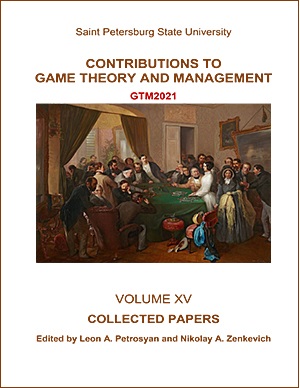Algorithm of Hierarchical Matrix Clusterization and Its Applications
DOI:
https://doi.org/10.21638/11701/spbu31.2022.13Abstract
Keywords:
hierarchial matrix clusterization, influence of agents, working groups, advertising in social networks
Downloads
References
Downloads
Published
How to Cite
Issue
Section
License
Articles of "Contributions to Game Theory and Management" are open access distributed under the terms of the License Agreement with Saint Petersburg State University, which permits to the authors unrestricted distribution and self-archiving free of charge.




